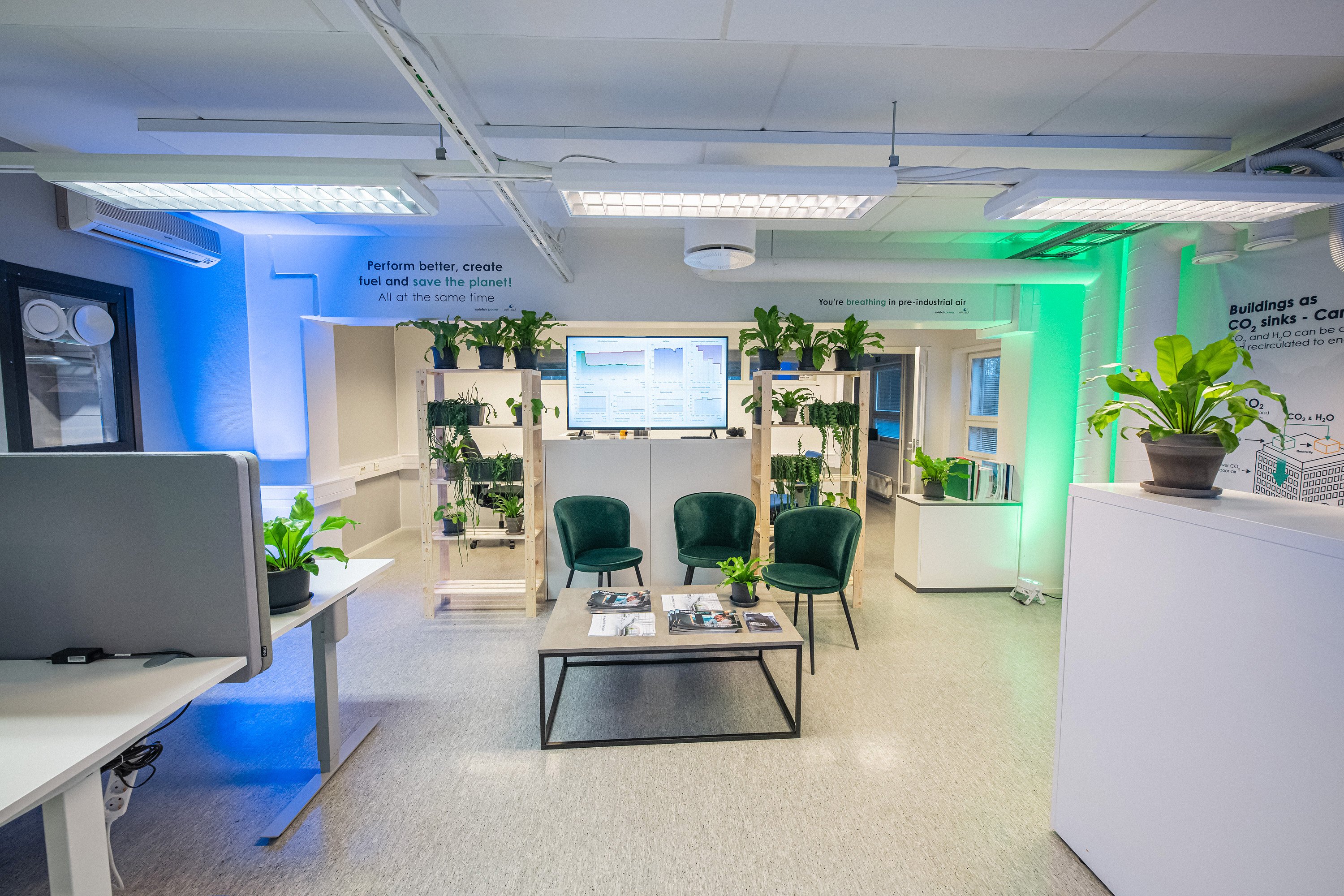Building-integrated carbon capture: Carbon dioxide removal through buildings’ mechanical systems
Building-integrated carbon capture (BICC) is a mechanism capable of absorbing carbon dioxide (CO2) from the air to be stored and then converted into useful carbon-based materials without negatively impacting the environment. BICC adapts an existing carbon-capture technology called Moisture Swing Air…
asu.pure.elsevier.com

The significancy of adjusting indoor CO2 level by applying direct air capture unit to an office building – LUTPub
Carbon dioxide (CO2) emissions have various consequences that affect the environment, human health, and society. While early studies used CO2 as a ventilation efficiency indicator, there is some doubt that CO2 itself is a pollutant that directly impacts human health and cognitive performance inside…
lutpub.lut.fi

Carbon capture from indoor air as an alternative ventilation technique | CLIMA 2022 conference
A polluted indoor space is a serious problem for the occupants especially for office workers who require high attentiveness levels. Indoor pollutants, especially carbon dioxide (CO2), reduce the workers performance by increasing sickness risk and impairing cognitive abilities needed to make informed…
proceedings.open.tudelft.nl

Potentials and limitations of direct air capturing in the built environment
This concept study presents an approach for resolving the trade-off between energy-efficient building operation and the provision of hygienically harm…
www.sciencedirect.com

New Directions: Potential Climate and Productivity Benefits from CO2 Capture in Commercial Buildings
Author(s): Gall, Elliott T; Nazaroff, William W
escholarship.org

Performance of novel ventilation strategy for capturing CO2 with scheduled occupancy diversity and infiltration rate
This paper proposes a novel ventilation strategy for capturing CO2 with scheduled occupancy diversity, and changes in recirculating ratio and infiltra…
www.sciencedirect.com

Carbon capturing for emissions reduction at building level: A market assessment from a building management perspective
Global climate change is a key concern in today’s world, especially with the growth of population and industrial activities. One of the biggest source…
www.sciencedirect.com
Evaluation of the humidity performance of a carbon dioxide (CO2) captu
This study examines the moisture performance of a carbon dioxide (CO2) adsorption device and its utilization as a novel ventilation strategy in buildings. The device adsorbs CO2 and a small amount of
ideas.repec.org

Direct Air Capture of CO2 in Enclosed Environments: Design under Uncertainty and Techno-Economic Analysis
CO2 capture from enclosed environments such as commercial buildings can result in reduced ventilation, thereby leading to decreased energy loads on th…
www.sciencedirect.com

Feasibility of MOF-based carbon capture from indoor spaces as air revitalization system
Conventional air-conditioning systems, for providing thermal comfort and acceptable indoor air quality, are energy intensive, especially for spaces lo…
www.sciencedirect.com

Advanced buffer materials for indoor air CO2 control in commercial buildings – PubMed
In this study, we evaluated solid sorbents for their ability to passively control indoor CO2 concentration in buildings or rooms with cyclic occupancy (eg, offices, bedrooms). Silica supported amines were identified as suitable candidates and systematically evaluated in the removal of CO…
pubmed.ncbi.nlm.nih.gov

Profile of occupant activity impact on indoor air — method of its determination
Indoor air quality (IAQ) in residential buildings is an issue of increasing importance. IAQ has a serious impact on human wellbeing, performance and h…
www.sciencedirect.com

article_info.php?aid=7130
Building-integrated carbon capturing (BICC) represents a new approach to existing carbon capture technology called Moisture Swing Air Capture Technology, by attempting to integrate this carbon-capturing technology onto building facades. This approach treats building facades as giant artificial leave…
www.hrpub.org

Thermodynamic exploration of temperature vacuum swing adsorption for direct air capture of carbon dioxide in buildings
Abrupt climate change such as the loss of Arctic sea-ice area urgently needs negative emissions technologies. The potential application of direct air …
www.sciencedirect.com
Making Direct Air Capture Affordable; Technology, Market and Regulatory Approaches
Direct Air Capture (DAC) is an important solution to curb global warming and enable a circular economy. As fossil fuels dwindle, carbon for commodities such as plastic, cement, steel and liquid fuel, will need to come from somewhere. With the low cost of industrial CO2 (roughly $80 a ton) as well as…
www.frontiersin.org






